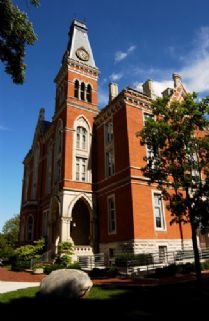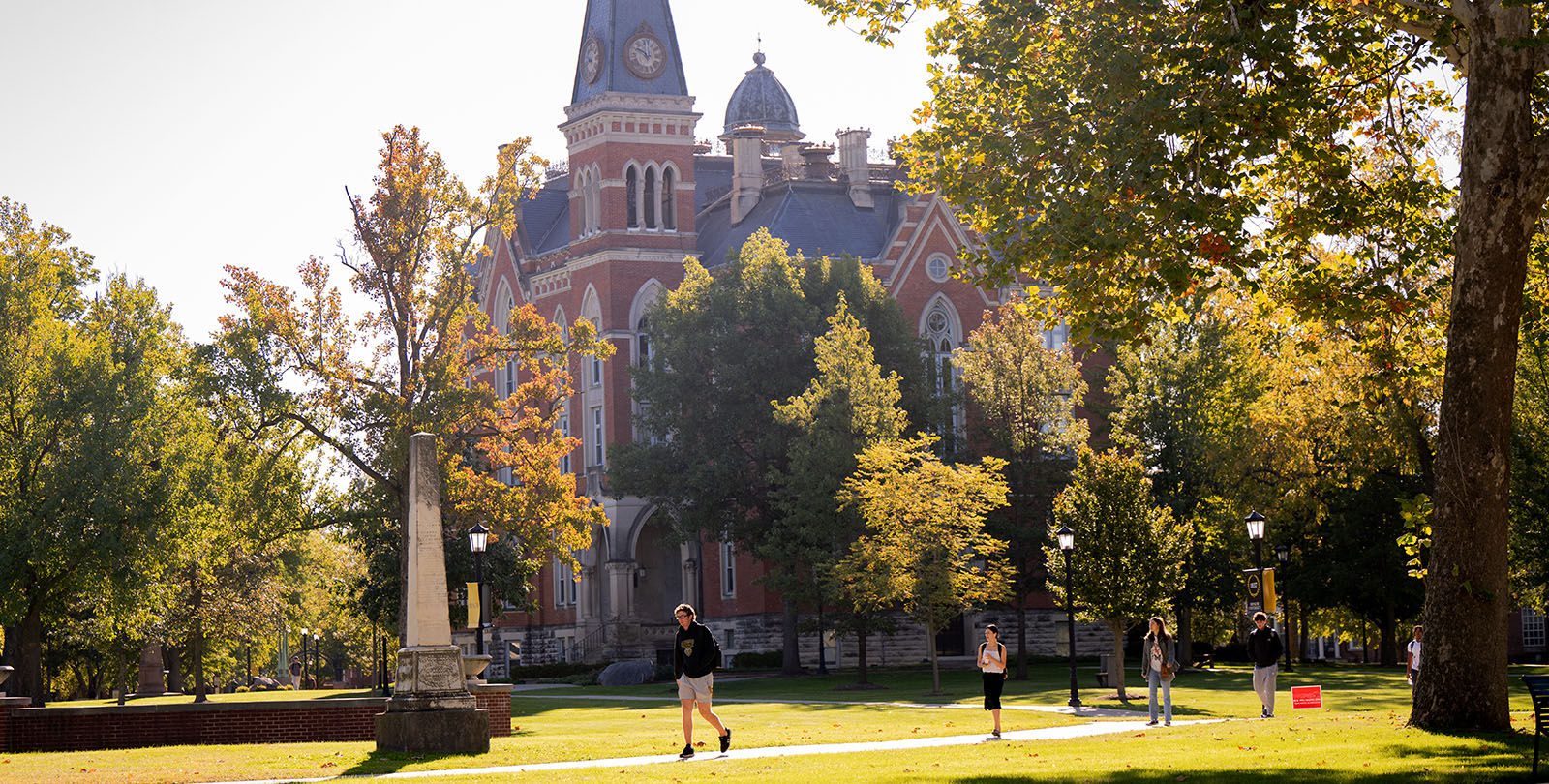News & Media
Midwest Earthquake Activity "Is Going to Continue," Says Prof. Scott Wilkerson
April 19, 2008
.jpg) April 19, 2008, Greencastle, Ind. - "Friday's was the strongest quake to strike the area in 40 years," today's Indianapolis Star writes of yesterday's 5.2 magnitude seismic event. "It is impossible to say when or where the next quake will hit Indiana, or what the magnitude might be, said Scott Wilkerson, chairman of the geosciences department at DePauw University in Greencastle," write Tim Evans and Erin Dostal in the front page story.
April 19, 2008, Greencastle, Ind. - "Friday's was the strongest quake to strike the area in 40 years," today's Indianapolis Star writes of yesterday's 5.2 magnitude seismic event. "It is impossible to say when or where the next quake will hit Indiana, or what the magnitude might be, said Scott Wilkerson, chairman of the geosciences department at DePauw University in Greencastle," write Tim Evans and Erin Dostal in the front page story.
Dr. Wilkerson tells the newspaper, "Predicting earthquakes in the future is a dicey game, at best. But I would expect to see this kind of earthquake probably in the next 10 to 20 years, maybe longer, with smaller quakes from time to time. It is something that is going to continue." 
Yesterday's quake caused no damage in central Indiana, but the Star notes, "Indiana sits near the New Madrid seismic zone, which generated the largest quake ever recorded in the continental U.S., and on top of a smaller fault that runs along the Wabash River valley." As a result, Wilkerson says, more significant seismic events are possible in this region. "It could happen here, but certainly not with near the frequency you would expect to see in places like California," the professor says.
Friday's quake was centered near West Salem, Illinois, and was felt as far away as Georgia, the text states. "At least six significant aftershocks followed the first quake, with the largest hitting at 11:14 a.m. and registering magnitude 4.6. Wilkerson said it was unusual to have such a strong aftershock with a 5.2 quake but said more aftershocks -- most not noticeable -- could continue for a week or longer."
but said more aftershocks -- most not noticeable -- could continue for a week or longer."
Evans and Dostal report, "The Geological Survey says quakes here 'can be felt over an area as much as 10 times larger than a similar-magnitude earthquake on the West Coast.' Wilkerson, the DePauw professor, said that is because of the bedrock that lies beneath much of the area. That same geological feature means many structures in the Midwest can withstand stronger quakes than those in areas with less bedrock."
Wilkerson states, "You will certainly feel the jolt of the earth shaking, but you probably won't see the same damage or undulating of the ground."
The complete story can be found at IndyStar.com.
M. Scott Wilkerson was also cited in an Associated Press article which received wide distribution yesterday. In November 2007, the Chronicle of Higher Education cited his work.
Source: Indianapolis Star
Contact Us
Communications & Marketing

Bob Weaver
Senior Director of Communications
- bobweaver@depauw.edu
- (765) 658-4286
-
201 E. Seminary St.
Greencastle, IN 46135